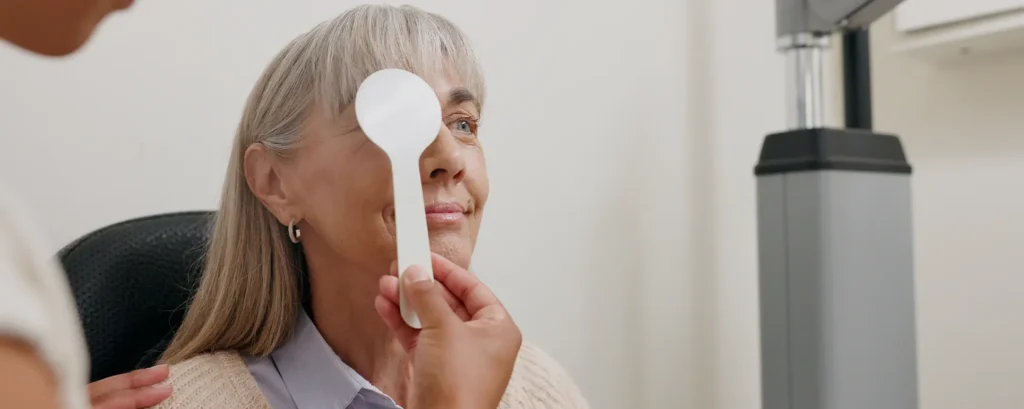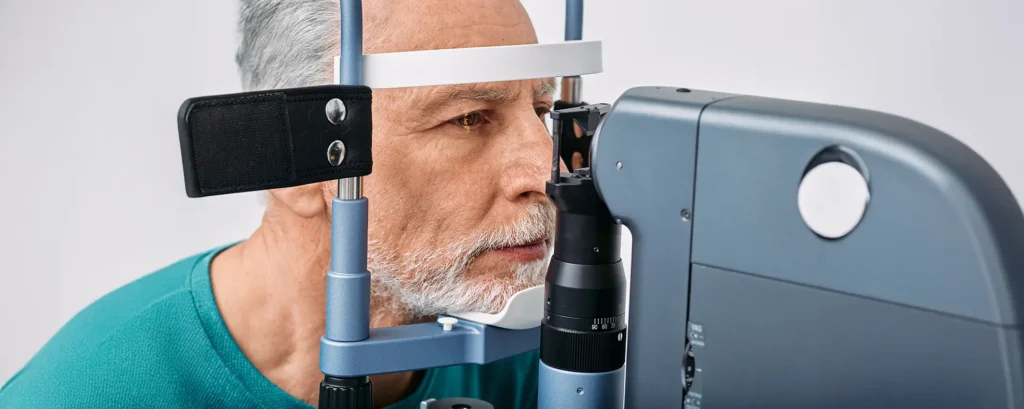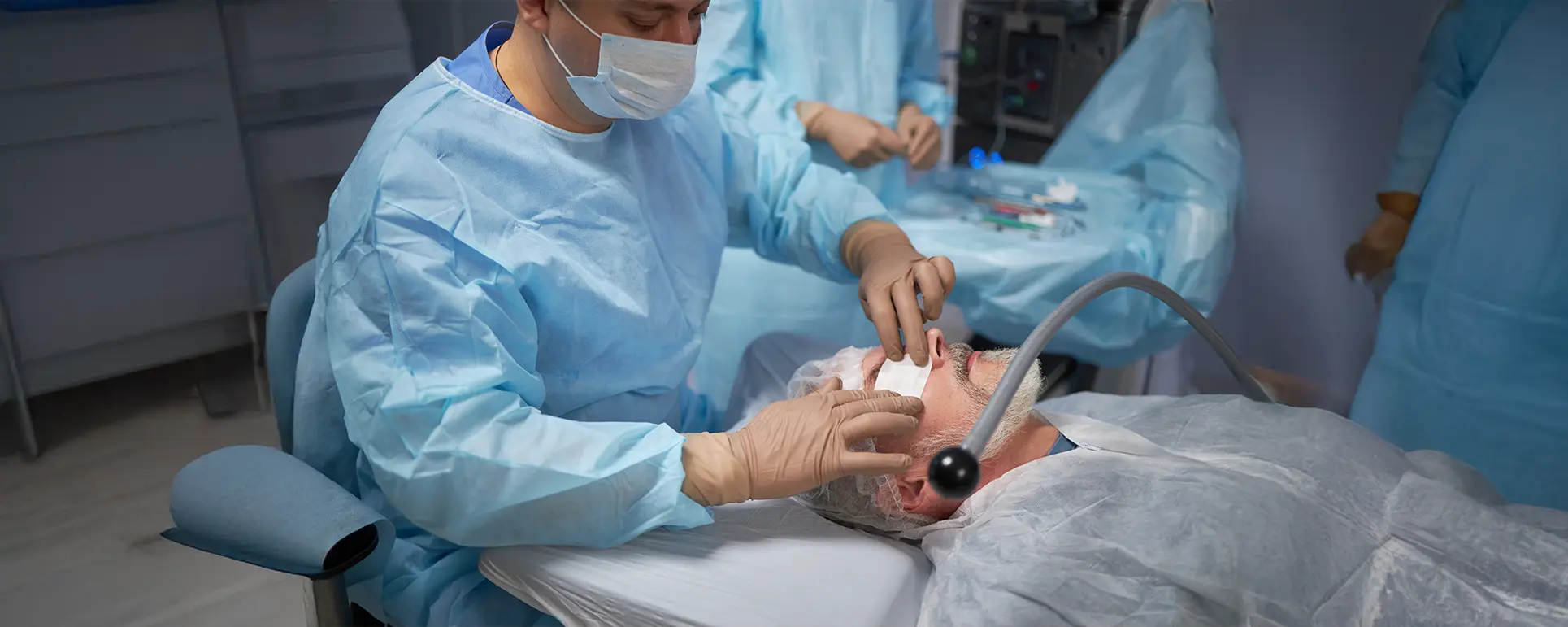Cataract surgery is one of the most common and successful procedures performed today, giving millions of people worldwide a clearer view of life again. If you’ve been told you need cataract surgery, chances are that both of your eyes are affected, even if one feels much worse than the other. This often leads to a very practical and important question: how long should you wait between having surgery on your first eye and then your second?
The answer isn’t always straightforward. It can depend on your eye health, the type of cataract you have, the surgical technique being used, and even your own lifestyle needs. Some people benefit from a short wait, while others may be advised to leave a longer gap. In some cases, both eyes can even be treated on the same day, though this approach has both advantages and risks.
In this article, we’ll explore why surgeons often recommend a waiting period, what the typical timeframes look like, how newer approaches such as Immediate Sequential Bilateral Cataract Surgery (ISBCS) work, and the factors that could influence the decision for your own care. By the end, you’ll have a clearer sense of what to expect and the right questions to ask your surgeon.
Why Is Cataract Surgery Often Done One Eye at a Time?
One of the first things to understand is that cataract surgery is almost always carried out on one eye first. Even though both eyes may need treatment, operating on them separately has traditionally been the safer approach. The main reason for this is risk management. If a complication occurs in the first surgery, the surgeon will want to assess and resolve it before moving on to the second eye.
Another reason relates to your vision during recovery. After the first surgery, your eye needs time to heal and adjust. Your surgeon also wants to ensure the lens implanted is working well for you. The outcome in the first eye can even guide decisions about the lens choice or surgical technique for the second eye, especially if you have astigmatism or other specific visual goals.
Finally, separating the surgeries gives you, as the patient, a chance to adapt gradually. You’ll get a feel for how your vision is changing and may be better prepared for the second operation.
The Typical Waiting Period Between Surgeries

In the UK and many other countries, the most common waiting period between surgeries is around two to six weeks. This timeframe allows the first eye to heal enough that your surgeon can be confident about the result. It also gives you some time to notice the benefits of the new lens before the other eye is treated.
Some surgeons prefer a shorter interval, especially if you’re struggling to function with just one corrected eye and one eye still clouded by cataract. Others may extend the wait if there were any issues during the first surgery, such as inflammation or slower-than-usual healing.
The exact timing isn’t fixed. It’s tailored to your needs, your overall health, and the surgeon’s judgement. That’s why you might hear of friends or family members having their second surgery after two weeks, while others might wait closer to two months.
Why Waiting Can Sometimes Be Helpful
Although many patients are keen to get both eyes done as quickly as possible, waiting a little while between surgeries has several advantages. Firstly, it allows your surgeon to assess the healing of the first eye properly. Every person’s eye responds slightly differently, and sometimes adjustments in lens choice are made for the second eye based on the outcome of the first.
Secondly, a short delay can help reduce the risk of infection spreading to both eyes. Endophthalmitis, a rare but serious infection after cataract surgery, is much more manageable if it affects only one eye. This is one reason why most surgeons still avoid same-day surgery on both eyes unless specific safeguards are in place.
Lastly, waiting gives you the opportunity to reflect on your visual experience. For example, if you notice your distance vision is excellent after the first lens but you struggle with reading, you might opt for a different lens strategy in your second eye. This fine-tuning approach can only be done if there is a gap between procedures.
Challenges of Living Between Surgeries

That said, having just one eye corrected can feel awkward in the short term. Many people notice imbalance between their eyes, a situation known as anisometropia. This happens because the operated eye now sees clearly, often without glasses, while the unoperated eye still relies on prescription lenses and has a cloudy lens.
This imbalance can cause visual strain, difficulty judging distances, or even dizziness. Tasks like driving, reading, or watching television may feel unusual during this in-between period. Some people manage well, while others find it frustrating and want the second surgery as soon as possible.
Your surgeon may suggest temporary adjustments, such as wearing a contact lens in the unoperated eye to help balance things out, or updating your glasses prescription in the short term. These solutions are not perfect but can help while you wait.
Immediate Sequential Bilateral Cataract Surgery (ISBCS)
In recent years, some clinics and surgeons have adopted an approach called Immediate Sequential Bilateral Cataract Surgery (ISBCS). This means both eyes are operated on during the same sitting, often with a short break in between to ensure strict infection control measures are followed.
The advantage of ISBCS is that you only need one trip to theatre, one round of anaesthesia, and one recovery period. It also eliminates the awkward in-between stage where your eyes are mismatched. For patients who travel long distances for treatment or who have difficulty attending multiple appointments, this can be a very appealing option.
However, ISBCS is not without risks. The biggest concern is the possibility of a rare but serious complication, such as infection, affecting both eyes at the same time. Strict surgical protocols are in place to reduce this risk, but not every patient is suitable. Your surgeon will weigh the pros and cons carefully before offering this option.
Factors That Influence the Waiting Period
The decision on how long to wait between surgeries isn’t just about tradition. Several important factors come into play:
- Your overall health – If you have conditions like diabetes, autoimmune disease, or eye problems such as glaucoma, your surgeon may want to monitor healing more closely before scheduling the second procedure.
- The outcome of the first surgery – If healing is smooth and the new lens is sitting perfectly, the second surgery may be planned sooner. If there are complications, extra recovery time may be recommended.
- Your visual needs – Someone who needs to drive for work may prefer a shorter gap, while someone who is retired and not under pressure may be more flexible.
- Clinic protocols – Some NHS trusts and private clinics have standard guidelines, while others leave it to the surgeon’s discretion.
These factors mean the “right” waiting period can look very different from one person to another.
Risks of Having Surgeries Too Close Together
Although shorter gaps between surgeries are sometimes possible, there are risks if the procedures are scheduled too close. The main concern is not giving the first eye enough time to stabilise. If swelling, infection, or unexpected refractive outcomes occur, the second surgery might be better planned once those issues are fully understood.
Operating too quickly could also increase strain on you as the patient. Cataract surgery, while safe, still involves a period of using drops, attending follow-ups, and avoiding certain activities. Doubling this workload too soon can feel overwhelming.
For these reasons, most surgeons still recommend at least a short gap, even when things go smoothly.
When a Shorter Gap May Be Beneficial
On the other hand, there are situations where a shorter interval between surgeries is beneficial. For example, if the cataract in your second eye is advanced and significantly limiting your vision, your surgeon may not want you to struggle with poor sight for long.
Some people also have jobs or lifestyle commitments that make waiting difficult. Pilots, drivers, or those with caring responsibilities may need both eyes corrected quickly to function safely. In these cases, surgeons may agree to schedule the second procedure sooner than the usual four to six weeks.
Same-Day Surgery vs Staged Surgery
The debate between same-day (ISBCS) and staged cataract surgery continues among eye surgeons. Proponents of ISBCS argue that with strict safety protocols, the risks are very low, and the convenience for patients is high. Critics, however, maintain that the small chance of a bilateral complication is still too great a risk.
At present, most surgeons in the UK still favour staged surgery with a gap of several weeks. Same-day bilateral surgery is offered in select centres and usually only to carefully chosen patients.
What to Expect During the Waiting Period
If you do end up waiting a few weeks between your surgeries, there are some things you can expect. Your vision will almost certainly feel lopsided at first, and your glasses prescription may not work well during this period. Some patients cope by removing the lens from their glasses on the operated side, or by using a temporary contact lens.
Your surgeon will give you clear instructions on eye drops, follow-up appointments, and activities to avoid. These might include not swimming, not rubbing your eyes, and avoiding heavy lifting until healing is stable.
Once the second surgery is done, most patients find that the balance is restored very quickly, and the frustration of the waiting period is forgotten.
The Long-Term Perspective
It’s important to remember that cataract surgery is designed to restore your vision for the long term. Whether you wait two weeks, six weeks, or even longer between surgeries, the final outcome is usually the same: both eyes are treated, and your vision is significantly improved.
The short waiting period is just a temporary inconvenience on the path to better sight. While it may feel frustrating at the time, most patients agree that the end result is well worth it.
Frequently Asked Questions
1. Why can’t both cataract surgeries be done at the same time?
The main reason is safety. Surgeons prefer to see how your first eye heals before moving on to the second. This helps reduce the risk of complications affecting both eyes and gives the surgeon more control over your overall outcome.
2. What is the average waiting time between cataract surgeries in the UK?
Most people wait between two and six weeks, though it varies depending on your health, your surgeon’s approach, and how the first eye recovers. Some people may wait longer if there are complications, while others may be offered a quicker second surgery.
3. Will my vision feel strange between surgeries?
Yes, it often does. The operated eye may see clearly while the unoperated eye is still blurry, which can feel unbalanced. This is temporary and usually resolves once both eyes are treated.
4. Can I drive after only one cataract surgery?
If your vision in the operated eye meets the DVLA driving standard and your surgeon confirms it’s safe, you may be able to drive. However, some people find the imbalance between eyes distracting, so it’s best to check with your surgeon before driving.
5. What happens if my first cataract surgery doesn’t go as planned?
If there are complications or slower-than-expected healing, your surgeon may recommend delaying the second surgery until your eye has fully recovered. This ensures that any lessons learned can be applied to the second procedure.
6. Are there risks in waiting too long between surgeries?
Not usually, but if your second cataract is advanced, waiting may prolong your difficulties with poor vision. Your surgeon will help balance safety with your need to function day to day.
7. What is Immediate Sequential Bilateral Cataract Surgery?
This is when both eyes are operated on during the same session. It offers convenience and faster overall recovery, but it also carries the small risk of both eyes being affected if a complication occurs.
8. Can lens choice be adjusted between surgeries?
Yes. One benefit of staged surgery is that the outcome in your first eye can guide the choice for your second eye. For example, you may decide to aim for sharper reading vision in the second eye if distance vision is excellent in the first.
9. Will I need glasses between surgeries?
Possibly. Some patients find their old glasses no longer work well after the first surgery. Temporary solutions such as contact lenses or using glasses with one lens removed may help until both eyes are corrected.
10. Is recovery easier once both eyes are done?
Yes. Most patients feel much more comfortable and balanced once both eyes have been treated. The awkwardness of the in-between stage usually fades quickly once the second surgery is complete.
Final Thoughts
So, how long should you wait between cataract surgeries on each eye? The truth is that there isn’t a single answer that fits everyone. For most people, the gap is usually between two and six weeks, which gives enough time for the first eye to heal and for your surgeon to be confident about the result. In some cases, it may be shorter, while in others—especially if there were complications—the wait may be longer. And for certain patients, same-day surgery on both eyes may even be an option.
What really matters is that the timing feels right for both your eyes and your lifestyle. The short period of imbalance between surgeries can feel frustrating, but it’s just a temporary stage on the way to having clearer, more balanced vision. Once both eyes are treated, most patients find the improvement in quality of life to be remarkable.
If you’re considering your options and want a clear, tailored plan, booking a consultation with us at the London Cataract Centre can help. Together, we can look at your specific needs and agree on the timing that gives you both confidence and the best long-term results.
References
- King, C., Botcherby, E. J., Adams, M., & Maling, S. J. (2024) ‘Implementing immediate sequential bilateral cataract surgery at Buckinghamshire Healthcare NHS Trust’, Eye, doi:10.1038/s41433-024-03202-1. Available at: https://pubmed.ncbi.nlm.nih.gov/38977819 (Accessed: date).
- Alsusa, M., Ahmad, S., Roberts, H. et al. (2025) ‘Safety and efficacy of a novel “One-Visit, Both-Cataracts” high-volume see-and-treat immediate sequential bilateral cataract surgery service in a public healthcare setting’, Eye. Available at: https://www.nature.com/articles/s41433-025-03659-8 (Accessed: date).
- Royal College of Ophthalmologists (2020) Immediate Sequential Bilateral Cataract Surgery (ISBCS) Guidance, RCOphth. Available at: https://www.rcophth.ac.uk/wp-content/uploads/2020/09/Immediate-Sequential-Bilateral-Cataract-Surgery-Guidance.pdf (Accessed: date).
- Grzybowski, A., Wąsińska-Borowiec, W., & Claoué, C. (2016) ‘Pros and cons of immediately sequential bilateral cataract surgery (ISBCS)’, Saudi Journal of Ophthalmology, 30(4), pp. 244-249. Available at: https://www.sciencedirect.com/science/article/pii/S1319453416300534 (Accessed: date).
- Lundström, M., Behndig, A., Stenevi, U. et al. (2024) ‘Ten-year trends of immediate sequential bilateral cataract surgery: analyses from a Scandinavian registry’, Acta Ophthalmologica, doi:10.1111/aos.15688. Available at: https://onlinelibrary.wiley.com/doi/10.1111/aos.15688 (Accessed: date).

